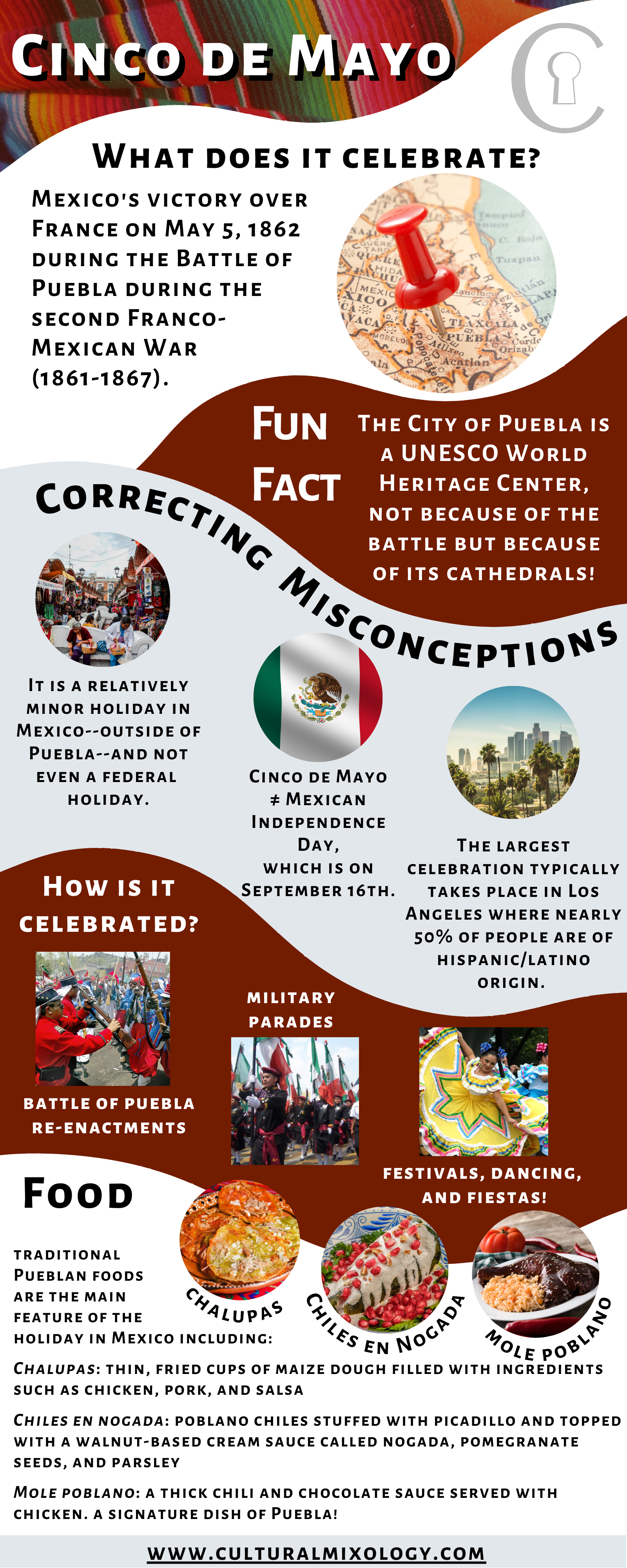Cinco de Mayo has taken off in the United States as a fun time to get together, party, eat tacos, and drink margaritas. How much do you know about the Mexican holiday’s origins and traditions though?
Cinco de Mayo celebrates the Battle of Puebla, the Mexican army’s unexpected victory over the French forces on May 5, 1862. The battle was part of the Franco-Mexican War, sparked by Benito Juárez (President of Mexico at the time) who declared Mexico would not pay their colonially constructed “debt” to European governments. Led by General Ignacio Zaragoza, 2,000 Mexican army members successfully defended their homeland from a French invasion of a nearly 6,000-person militia. While the battle did not end the war between Mexico and France, it became a symbol of Mexican resistance and resilience, particularly in the face of overwhelming odds.
Throughout the US in the 1960s, the symbolic meaning of the Battle of Puebla grew in Mexican-American communities, with the event eventually becoming a reflection of the power of indigenous Mexicans. Chicano activists, in particular, worked to raise awareness of the holiday, identifying with the victory of Indigenous Mexicans (such as Juárez) over European invaders.
Now, Cinco de Mayo is widely celebrated every May 5th in the United States and has become a symbol of Mexican heritage and pride. In fact, Americans spend over $600 million on beer alone for Cinco de Mayo celebrations, rivaling even the Super Bowl in terms of alcoholic beverage sales!
While often mistaken for Mexican Independence Day (declared 50 years earlier), Cinco de Mayo remains an important holiday that celebrates the valor and courage of the Mexican people. It also serves as a reminder of the historical ties between Mexico and the United States, as well as the rich and vibrant cultural heritage of Mexican-Americans.
Check out our infographic below to learn more about Cinco de Mayo:














